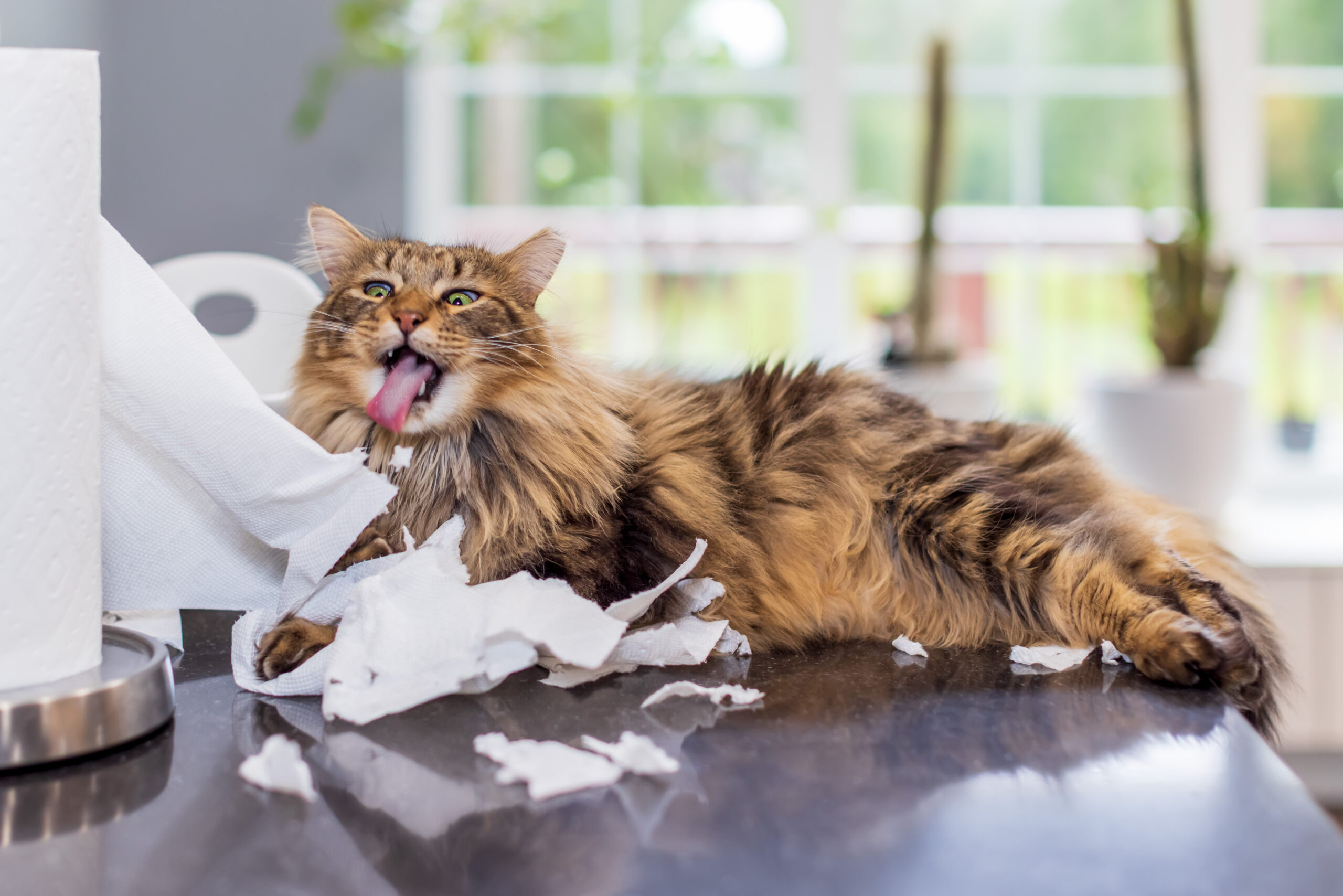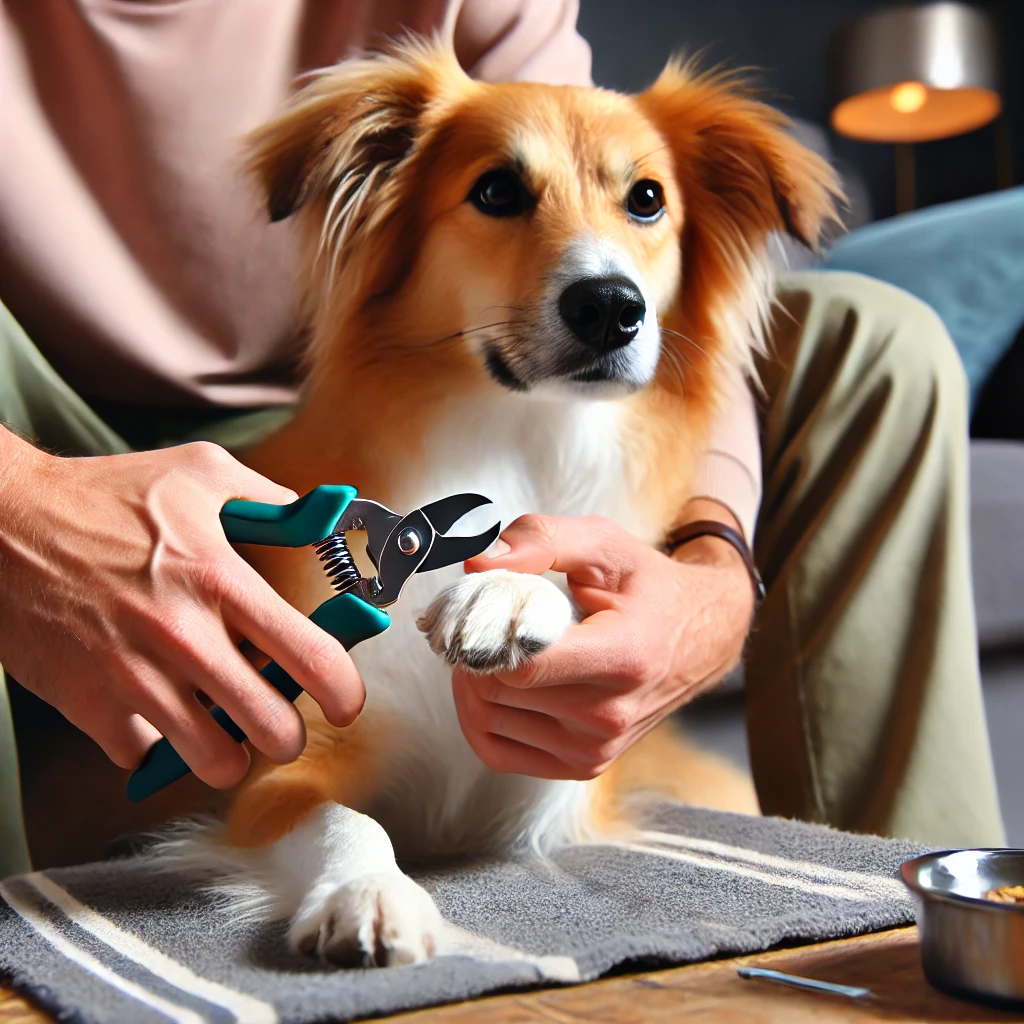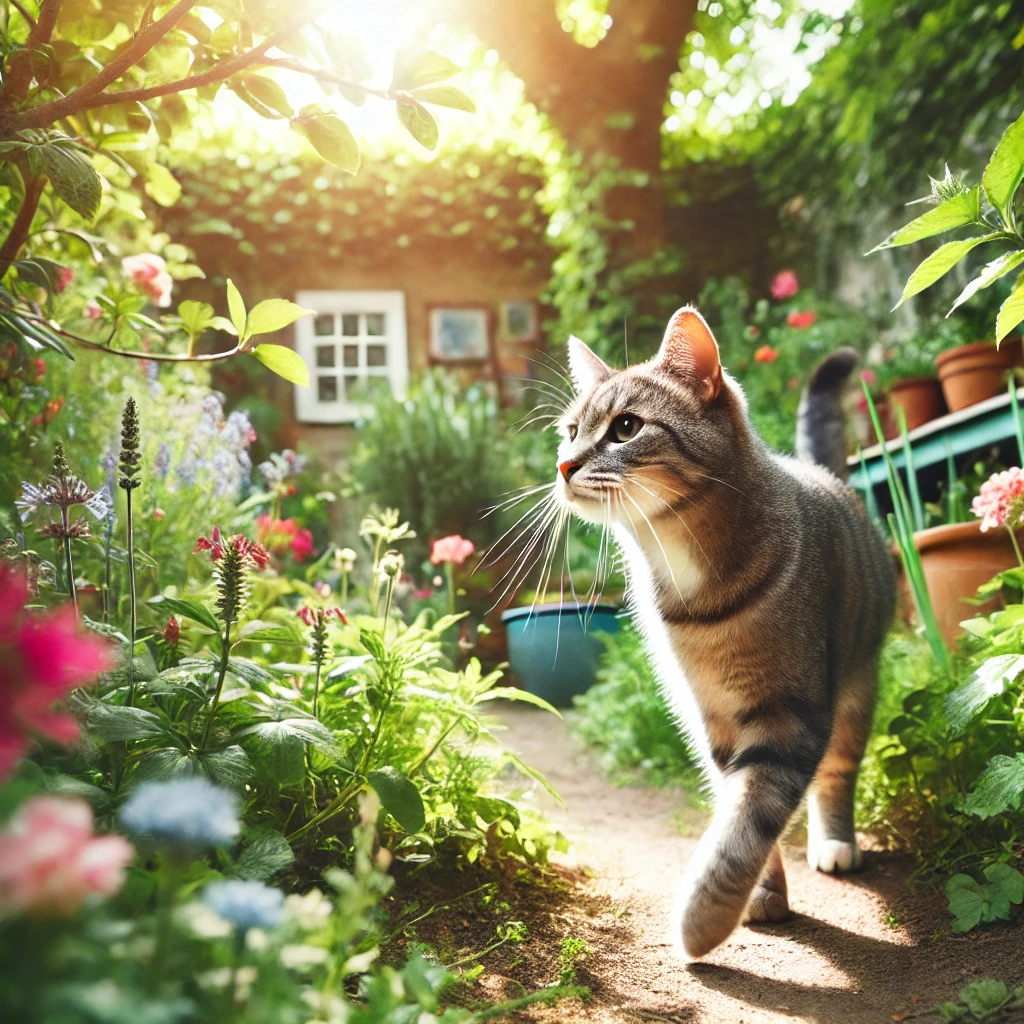Ensure your home is safe for your curious cat by removing hazards and providing safe spaces. Secure loose wires and keep toxic plants out of reach.
Creating a safe environment for your cat involves mindful adjustments to your living space. Cats are naturally curious and can get into potentially dangerous situations. It’s crucial to remove hazards like loose wires, small objects, and toxic plants. Provide safe spaces with comfortable bedding and scratching posts.
Ensure windows and balconies are secure to prevent falls. Regularly inspect your home for new risks as your cat explores new areas. By cat-proofing your home, you create a secure and enjoyable environment for your feline friend.
The Curious Cat: Risks At Home
Cats are naturally curious creatures. They love to explore every corner of your home. This curiosity can sometimes lead them into dangerous situations. Understanding these risks can help you create a safer environment for your feline friend.
Common Household Hazards
Certain household items can pose significant risks to cats. Here are some common hazards:
- Electrical cords: Cats may chew on these, risking electric shocks.
- Small objects: Items like rubber bands and paper clips can be swallowed.
- Chemicals: Cleaning supplies and pesticides can be toxic if ingested.
- Plants: Some houseplants, like lilies and poinsettias, are toxic to cats.
Hidden Dangers For Felines
Some dangers are less obvious but still pose threats to your cat. Consider the following hidden dangers:
- Windows: Cats can fall from open windows. Ensure windows have screens.
- Appliances: Cats can crawl into washing machines or dryers. Always check before use.
- Trash cans: Cats may ingest harmful items from the trash. Use pet-proof trash cans.
| Hazard | Risk |
|---|---|
| Electrical cords | Electric shocks |
| Small objects | Choking hazard |
| Chemicals | Toxic ingestion |
| Plants | Plant toxicity |
| Windows | Falling risk |
| Appliances | Entrapment danger |
| Trash cans | Harmful ingestion |
Start With The Basics: Cat-proofing 101
Cats are naturally curious. They love to explore and play. This curiosity can sometimes lead to trouble. Cat-proofing your home is important. It keeps your cat safe from harm. Start with the basics of cat-proofing to ensure a safe environment.
Securing Loose Items
Loose items can be dangerous for cats. Secure them to prevent accidents.
- Power cords: Cats may chew on them. Use cord protectors.
- Small objects: Cats can swallow them. Keep them out of reach.
- Plastic bags: Cats can suffocate. Store them safely.
Consider using heavy-duty tape or clips to secure cords. Store small items in drawers or containers. Always dispose of plastic bags properly.
Protecting Fragile Objects
Fragile objects can break easily. Cats may knock them over. Protect these items to avoid accidents.
| Object | Protection Tip |
|---|---|
| Vases | Place them on high shelves. |
| Glassware | Store in cabinets with doors. |
| Decorative items | Use museum putty to secure them. |
Keep fragile items out of your cat’s reach. Use secure storage solutions to protect them. Your home will be safer for your curious cat.
Plants And Your Puss: A Green Dilemma
Many cat owners love plants. They add beauty and serenity to any home. But some plants can harm your curious cat. It’s crucial to know which plants to avoid and which are safe. Let’s dive into the green dilemma of plants and your feline friend.
Toxic Flora To Avoid
Cats love to nibble on leaves. Some plants can cause severe illness. Here are common toxic plants:
- Lilies: Can cause kidney failure.
- Sago Palm: Causes liver damage.
- Aloe Vera: Leads to vomiting and diarrhea.
- Philodendron: Causes oral irritation and swelling.
- Pothos: Leads to drooling and difficulty swallowing.
Safe Alternatives For Greenery
You can still enjoy plants. Choose cat-safe options:
| Plant | Benefits |
|---|---|
| Spider Plant | Non-toxic, easy to care for. |
| Areca Palm | Pet-friendly, adds a tropical touch. |
| Boston Fern | Safe for cats, purifies air. |
| Cat Grass | Edible, aids digestion. |
| Bamboo Palm | Non-toxic, pet-safe. |
Opt for these plants to keep your home green and your cat safe. Remember, always check if a plant is cat-safe before bringing it home.

Credit: www.petco.com
Chemicals And Cleaners: Lock And Store
Curious cats love to explore every nook and cranny. This can be dangerous, especially around household chemicals and cleaners. To keep your feline friend safe, it’s essential to lock and store these items properly.
Identifying Harmful Substances
Many everyday items can harm your cat. Here are some common harmful substances:
- Bleach: Used in cleaning, but very toxic to cats.
- Ammonia: Found in many cleaning products, it can cause respiratory issues.
- Antifreeze: Even a small amount can be deadly.
- Pesticides: These contain chemicals that are dangerous to pets.
Safe Storage Solutions
Proper storage can prevent accidents. Here are some tips:
- Lockable Cabinets: Use cabinets with child-proof locks to store chemicals.
- High Shelves: Place items out of reach of curious paws.
- Sealed Containers: Store chemicals in tightly sealed containers.
- Label Everything: Clearly label all containers with their contents.
| Item | Storage Solution |
|---|---|
| Bleach | Locked cabinet |
| Ammonia | High shelf |
| Antifreeze | Sealed container |
| Pesticides | Clearly labeled |
By following these tips, you can create a safe environment for your cat. Always be vigilant about storing harmful substances securely.
Cords And Cables: Eliminate The Enticement
Your home is your cat’s playground. Cats love to explore and play. Cords and cables can be dangerous to curious cats. They can chew on them, leading to risks. Eliminate this enticement by making your home safer.
Organizing Wires
Organizing wires is crucial for cat-proofing. Tidy up scattered cords to prevent accidents. Below are some tips to help:
- Cable Management Boxes: Hide multiple cords in a box.
- Velcro Straps: Secure loose wires neatly.
- Wall Clips: Keep wires off the floor using clips.
Preventive Products And Tips
Several products can deter your cat from cords. They protect both your cat and your electronics. Consider these options:
| Product | Benefit |
|---|---|
| Cable Covers | Protect cords from chewing. |
| Bitter Spray | Makes cords taste unpleasant. |
| Pet Deterrent Mats | Keep cats away from specific areas. |
Implement these tips to make your home safe. Your cat’s curiosity won’t lead to danger.

Credit: www.zoetispetcare.com
Furniture And Fixtures: Minimize The Mischief
Cats are naturally curious creatures. They love to explore every corner of your home. This can sometimes lead to accidents or damage. To keep your furry friend safe and your home in good condition, follow these tips on making furniture and fixtures cat-proof.
Anchoring Techniques
Ensure heavy furniture like bookshelves and cabinets are secure. Use anchoring straps or brackets to attach these items to the wall. This prevents them from tipping over if your cat decides to climb.
For smaller items, consider using museum putty. This sticky substance keeps objects like vases and picture frames in place. It’s a simple way to prevent accidental knocks and spills.
Scratch-proofing Surfaces
Cats love to scratch surfaces to mark their territory. Protect your furniture with these techniques:
- Use scratch guards on the sides of sofas and chairs. These clear plastic sheets are easy to apply and protect fabric from claws.
- Place scratching posts near favorite scratching spots. This encourages your cat to use the post instead of your furniture.
- Furniture covers can also help. Choose ones that are easy to wash and resistant to scratches.
To make surfaces less appealing for scratching, use double-sided tape. Cats dislike the sticky texture and will avoid those areas.
Windows And Balconies: Barriers To Bounding
Curious cats love exploring every nook and cranny of your home. Windows and balconies can be particularly enticing yet dangerous. Let’s explore ways to cat-proof these areas to keep your feline friend safe.
Installing Screens And Nets
One of the best ways to secure windows and balconies is by installing screens and nets. These barriers prevent your cat from escaping or falling. Ensure the screens are sturdy and tear-resistant. Nets should be well-secured and cover the entire opening.
- Use metal screens for extra durability.
- Choose nets specifically designed for pets.
- Regularly check for any wear and tear.
Restricting Access
Another effective way to cat-proof your home is by restricting access to windows and balconies. You can use baby gates or door barriers. These prevent your cat from reaching dangerous areas. Be sure to secure these barriers properly.
- Install baby gates at balcony entrances.
- Use door barriers for rooms with open windows.
- Make sure barriers are tall enough to prevent jumping over.
Follow these tips to ensure your cat enjoys a safe and secure environment at home.
Food And Feasting: Feline-proof Your Pantry
Your curious cat loves to explore every nook and cranny. This includes your pantry and kitchen areas. Ensuring your food storage is safe can prevent many health issues for your furry friend. Let’s dive into some essential tips for cat-proofing your pantry.
Unsafe Human Foods
Many human foods are toxic to cats. Keep them out of reach to ensure their safety.
- Chocolate: Contains theobromine, which is toxic to cats.
- Onions and Garlic: Can cause anemia and other health issues.
- Grapes and Raisins: May lead to kidney failure.
- Alcohol: Even small amounts can be dangerous.
- Caffeine: Found in coffee, tea, and certain sodas. Harmful to cats.
Ensure these items are stored in high cabinets or securely locked drawers. Always be vigilant about what your cat can access.
Securing Garbage And Food Storage
Garbage bins and food storage areas can be tempting for a curious cat. Here are some tips to keep them secure:
- Use trash cans with tight-fitting lids. This prevents your cat from rummaging through the garbage.
- Store dry food in airtight containers. This keeps it fresh and out of reach.
- Keep pantry doors closed and secured. Consider child-proof locks if necessary.
- Install cabinet locks on lower cabinets. This can deter your cat from exploring forbidden areas.
Taking these steps can help ensure your curious cat stays safe and healthy.
Creating A Safe Haven: Cat-friendly Spaces
Your curious cat needs a safe haven. Cat-proofing your home involves creating cat-friendly spaces. These spaces should cater to their play and rest needs. Let’s explore how to make your home a sanctuary for your feline friend.
Designating Play Areas
Cats love to play. Create dedicated play areas with their favorite toys. Use interactive toys like feather wands, laser pointers, and balls. Keep these areas clutter-free to prevent accidents. Consider using a cat tree or scratching post for climbing and scratching.
Here’s a simple setup for a play area:
- Cat tree – for climbing and perching.
- Scratching post – to keep their claws healthy.
- Interactive toys – to stimulate their hunting instincts.
- Soft mats – for a safe landing spot.
Avoid placing fragile items in the play area. Cats can knock them over easily.
Comfort Zones For Rest
Cats need cozy places to rest. Create comfort zones with soft bedding and blankets. Place these in quiet corners of your home. Cats feel safe when they can retreat to a quiet spot.
Consider these items for comfort zones:
- Soft beds – provide warmth and comfort.
- Blankets – for extra coziness.
- Cat caves – enclosed spaces for a sense of security.
- Window perches – for sunbathing and watching outside.
Ensure these areas are free from drafts and loud noises. Cats enjoy peace and quiet.
Emergency Preparedness: Plan For The Unexpected
Having a cat means being ready for surprises. Cats are curious and can get into trouble. Preparing for emergencies keeps them safe. Let’s explore how to be ready for emergencies with your cat.
First Aid Essentials
Keep a cat first aid kit at home. This kit should have:
- Gauze pads and bandages
- Antiseptic wipes
- Tweezers
- Digital thermometer
- Hydrogen peroxide (for cleaning wounds)
- Pet-safe pain reliever
- Emergency contact numbers (vet, poison control)
Store the kit in an easy-to-reach place. Check the supplies regularly. Replace items as needed. Knowing basic first aid for cats helps in emergencies. Learn how to handle cuts, bites, and choking. This knowledge can save your cat’s life.
Evacuation With Cats
Emergencies may need you to leave home fast. Have a cat evacuation plan. Include:
- A sturdy carrier for each cat
- Food and water for three days
- Extra litter and a small litter box
- Medications and medical records
- A blanket or toy for comfort
Practice getting your cat into the carrier. This helps during real emergencies. Keep the carrier near the exit. During storms, fires, or other threats, stay calm. Your cat will feel your emotions. A calm approach makes evacuation smoother.
| Item | Purpose |
|---|---|
| Carrier | Transport your cat safely |
| Food & Water | Keep your cat nourished |
| Medications | Ensure ongoing health |
| Blanket/Toy | Provide comfort |
Preparing for the unexpected keeps your cat safe. Stay ready and protect your furry friend.

Credit: www.purina.co.uk
Frequently Asked Questions
How Can You Make Your Home Safe For A Cat?
Secure windows and balconies, remove toxic plants, hide electrical cords, keep small objects out of reach, and provide safe spaces for your cat.
How Can I Make My House More Interesting For My Cat?
Provide climbing trees, scratching posts, and cozy beds. Add interactive toys and puzzle feeders. Designate sunny spots for relaxation. Rotate toys to maintain interest.
How Do I Make My Cat Less Curious?
Provide plenty of stimulation with toys and puzzles. Create a safe, engaging environment. Rotate toys regularly.
How Do I Make My House Cat Friendly?
Create cozy resting spots and scratching posts. Provide interactive toys for mental stimulation. Ensure fresh water and nutritious food. Keep litter boxes clean and accessible. Secure windows and balconies to prevent accidents.
Conclusion
Ensuring your home is safe for your curious cat is essential. Implement these tips to create a cat-friendly environment. Your feline friend will enjoy exploring without facing any dangers. With a little effort, you can provide a secure and happy home for your beloved pet.
Happy cat-proofing!



